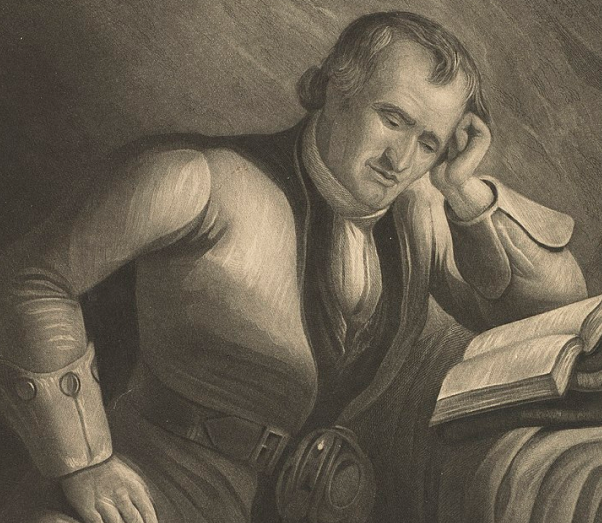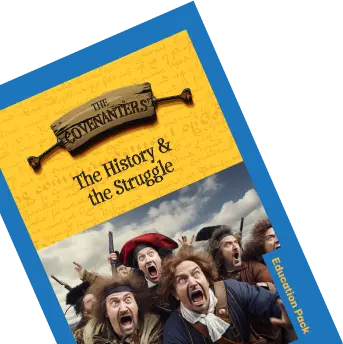

Margaret Wilson and Margaret McLachlan, known as the “Wigtown Martyrs,” are remembered for their tragic and poignant story. In 1685, both women were arrested for attending illegal conventicles and refusing to take the oath of abjuration. They were sentenced to death by drowning in the Solway Firth. Margaret Wilson, only 18 years old, and Margaret McLachlan, an elderly woman, were tied to stakes in the rising tide. Their steadfastness in the face of death highlighted the extreme measures the government employed to enforce religious conformity and the profound courage of those who resisted.

John Paton is remembered for his steadfast dedication to the Presbyterian cause during a period of intense religious and political turmoil in Scotland. Born around 1620 in Fenwick, Ayrshire, Paton was a farmer by profession, but his legacy is defined by his role as a militant defender of the Covenanter movement. The Covenanters were Scots who bound themselves by covenant to maintain Presbyterianism as the sole religion of Scotland, in opposition to attempts by the Stuart kings, particularly Charles I and Charles II, to impose episcopacy.
Paton’s military engagements are well-documented, particularly his participation in key battles during the Covenanter uprisings. He fought at the Battle of Drumclog in 1679, where the Covenanters secured a significant victory against government forces led by John Graham of Claverhouse, known as “Bonnie Dundee.” This battle was a critical moment of resistance, showcasing the determination and tactical prowess of the Covenanter forces. Following Drumclog, Paton also fought at the Battle of Bothwell Bridge later that same year, where the government forces overwhelmed the rebels, leading to a disastrous defeat.
Despite this setback, Paton continued his involvement in the Covenanter cause, unwavering in his commitment to religious freedom and Presbyterianism. His resilience and leadership made him a target for government forces, and he was eventually captured and brought to trial. In 1684, John Paton was executed in the Grassmarket of Edinburgh, a common site for the execution of Covenanters. His death was a stark reminder of the brutal repression faced by those who opposed the royal imposition of religious practices.

James Renwick, born in 1662 in Moniaive, Dumfriesshire, emerged as a significant figure in the latter stages of the Covenanter movement in Scotland. Educated at the University of Edinburgh, Renwick was deeply influenced by the religious and political turmoil of his time, particularly the severe persecution of Presbyterians under the Stuart monarchy. In 1683, after witnessing the brutal execution of Donald Cargill, a prominent Covenanter minister, Renwick fully committed himself to the cause, realizing the profound need for strong leadership within the beleaguered movement.
Renwick’s refusal to comply with royal authority and his persistent advocacy for religious freedom made him a prime target for the authorities. In early 1688, he was captured in Edinburgh and brought to trial. Despite the opportunity to recant and save his life, Renwick stood firm in his convictions. He was sentenced to death and executed by hanging on February 17, 1688, becoming the last Covenanter martyr. His death marked the end of a brutal chapter in Scottish history but also highlighted the enduring spirit and resilience of the Covenanters. James Renwick’s legacy is remembered for his extraordinary commitment to faith and the ultimate sacrifice he made for religious liberty.

James Guthrie, born around 1612 in Angus, Scotland, was a significant figure in the Covenanter movement. Initially educated in Episcopalian views at the University of St Andrews, Guthrie’s perspective shifted under the influence of theologian Samuel Rutherford, leading him to embrace Presbyterianism passionately. He became a minister in the early 1640s and soon took a leading role in advocating for the Covenant, a pledge to maintain Presbyterian worship and resist royal interference.
As the minister of Stirling’s East Church, Guthrie was known for his powerful sermons and strong stance against religious compromise. He played a key role in drafting the “Western Remonstrance” in 1650, a document calling for strict adherence to the Covenant and criticizing leniency towards Royalists. His unyielding opposition to the monarchy’s religious policies made him a target for arrest.
In 1661, after the Restoration of Charles II, Guthrie was charged with high treason due to his resistance activities and involvement in the Covenant. Despite his strong defense, he was sentenced to death and executed on June 1, 1661, in Edinburgh. His head was displayed on the Netherbow Port as a deterrent to others.
James Guthrie’s martyrdom symbolized the steadfastness of the Covenanter movement. His life and sacrifice highlighted the struggle for religious freedom in Scotland, leaving a lasting legacy as a courageous and principled leader.
Find out more about our outreach packs and programmes

Add in some of your details below to sign our digital visitor book and keep in touch with us
Lochgoin Covenanters’ Musuem is open from
9am – 5.30 Monday – Saturday and closed Sunday
Lochgoin Farm
Fenwick, East Ayrshire
KA3 6EX
info@lochgoin.org